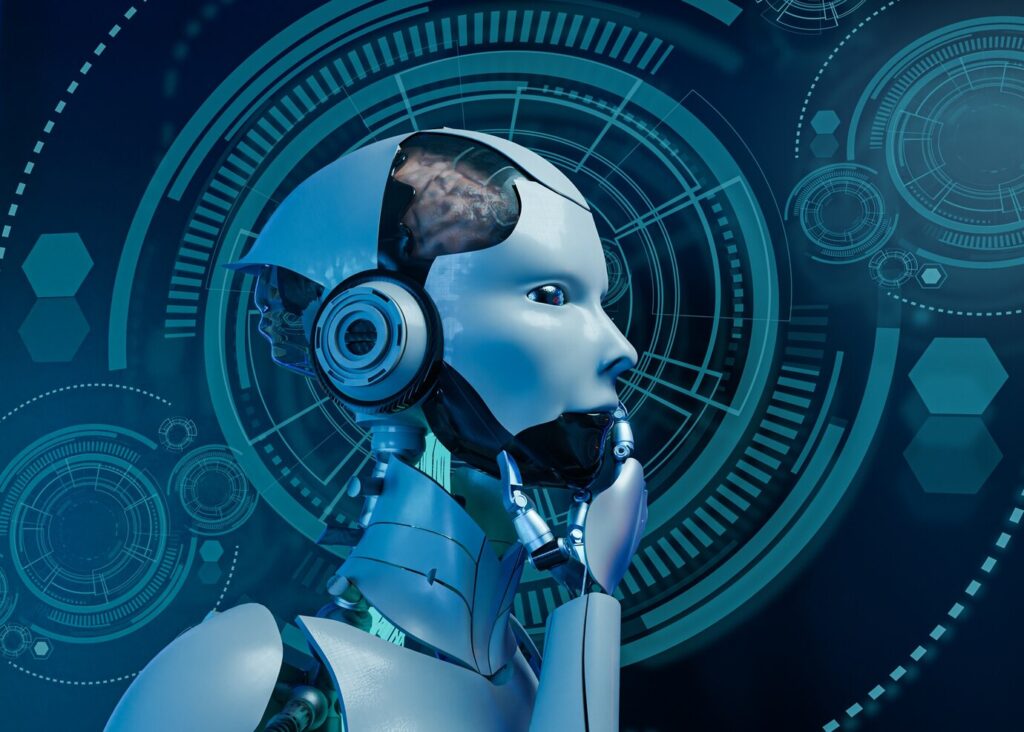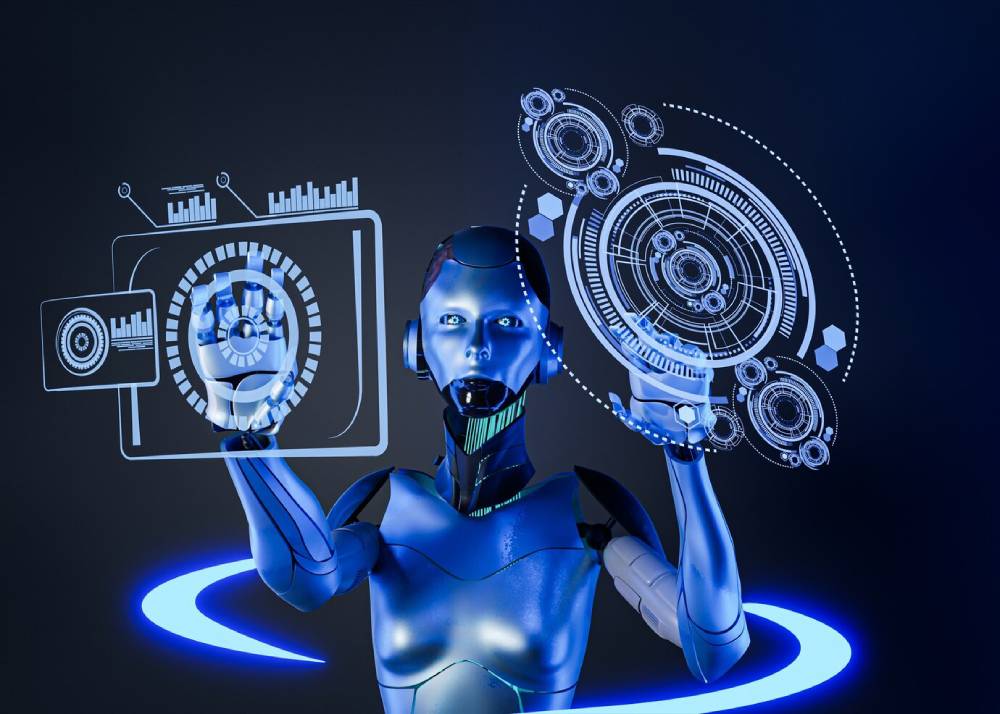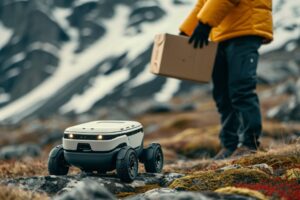The Science Blog

Humanoid Robots and Their Impact on Daily Life
Humanoid robots, once just in science fiction, are now entering our world. They are blurring the lines between humans and machines. These robots can walk, talk, gesture, and mimic emotions. They are made for human-centred places like schools, homes, hospitals, and offices. This brings automation and artificial intelligence (AI) closer to our daily lives.
Personal robots are getting smarter, easier to use, and more available as robotics trends change. Humanoid robots are set to change our lives. They will help the elderly and serve as customer service avatars in airports. These bots will shape how we live, work, and interact in the future.
This article looks at humanoid robots. We discuss their abilities, current uses, and future roles in daily life.
What Are Humanoid Robots?

Humanoid robots are machines designed to resemble and replicate human form and behaviour. They typically have:
- A head, torso, arms, and legs (or equivalents)
- Facial features for communication
- Sensors and cameras for perception
- Artificial intelligence for decision-making and interaction
Their purpose is not just to look human, but to operate within environments built for people—navigating stairs, handling tools, or engaging in natural conversation.
Some humanoid robots are purely functional, while others focus heavily on aesthetics and emotional expression to foster human-like connections.
The Rise of Personal Robots
From Utility to Companionship
Personal robots are designed to serve individuals in domestic or personalised settings. While robotic vacuum cleaners and smart assistants like Alexa paved the way, humanoid personal robots are taking the concept further by offering social interaction, emotional support, and physical assistance.
Key Capabilities:
- Voice recognition and natural language processing
- Object recognition and basic manipulation
- Emotional AI to detect and respond to mood
- Connectivity with smart home systems
As these robots become more intelligent and expressive, they’re being welcomed into homes not just as tools, but as companions, carers, and even tutors.
Everyday Applications of Humanoid Robots
1. Elderly Care and Companionship
One of the most promising uses for humanoid robots is in supporting ageing populations. Robots like Pepper, ElliQ, and Robear are designed to:
- Remind patients to take medication
- Monitor health metrics and alert caregivers
- Provide conversation, music, or games to combat loneliness
- Assist with mobility or lifting tasks
These robots don’t replace human carers but complement them—offering round-the-clock support, reducing workload, and improving quality of life.
2. Education and Child Development

In classrooms or at home, personal robots like Nao and Moxie are being used as interactive learning aids.
Benefits Include:
- Teaching languages or STEM subjects through play
- Encouraging shy or neurodiverse children to engage
- Adapting lessons to the learner’s pace and style
- Providing consistency and patience that human educators can’t always maintain
Children often perceive humanoid robots as non-threatening, engaging learning partners—making them particularly effective in early education and special needs environments.
3. Customer Service and Retail
Humanoid robots are now being trialled in banks, airports, and shopping centres to guide, inform, and serve customers.
Use Cases:
- Answering FAQs and providing directions
- Offering product demonstrations or services
- Performing concierge tasks in hotels
- Assisting with check-in or queue management
With expressive faces and polite demeanours, robots like Pepper can put customers at ease while speeding up service and reducing pressure on staff.
4. Home Assistants
While we’re familiar with voice assistants like Siri or Google Assistant, humanoid personal robots bring a physical presence to the smart home ecosystem.
Examples:
- Bringing items across rooms
- Monitoring home security
- Reading stories to children
- Acting as a central control for connected devices
Robots such as Buddy or Temi offer interactive touchscreen interfaces and mobile bases, turning them into roving, responsive companions within the home.
5. Healthcare and Therapy

From robotic receptionists in clinics to therapeutic bots used in rehabilitation, humanoid robots are making waves in healthcare.
Their Roles Include:
- Conducting basic health checks and collecting data
- Supporting physical therapy through guided exercises
- Offering cognitive stimulation for patients with dementia
- Reducing anxiety in paediatric patients through distraction or play
In mental health, emotionally intelligent robots are being explored as therapeutic aids that provide non-judgemental support for users in distress.
Robotics Trends Driving Innovation
The development of humanoid and personal robots is being accelerated by several key trends:
1. Advances in AI and Machine Learning
Improved algorithms allow robots to process complex language, recognise emotions, and make context-aware decisions.
2. Sensor and Actuator Improvements
More precise motors and sensors mean smoother movement, better facial expression, and more accurate object handling.
3. Miniaturisation and Battery Tech
Compact, efficient components allow for lighter, more mobile robots that can run for longer without recharging.
4. 5G and Edge Computing
Faster connectivity enables real-time data processing and interaction, essential for responsive and safe robotic behaviour.
Challenges and Considerations
While the future of humanoid robots is exciting, it is not without hurdles:
1. Affordability
Many personal robots remain expensive, making them inaccessible to the average household. As production scales and technology advances, prices are expected to drop.
2. Privacy and Data Security
Robots with cameras and microphones must handle personal data responsibly. Robust encryption, user consent, and ethical design are critical.
3. Emotional Attachment
Users—especially children or elderly individuals—may form attachments to robots. Designers must navigate how to balance realism with transparency about a robot’s limitations.
4. Job Displacement
As robots take on service and support roles, concerns arise about their impact on employment. However, they also create new jobs in programming, maintenance, and support services.
The Future of Humanoid Robots in Daily Life
Looking ahead, humanoid robots will become more common in households, workplaces, and public spaces. As they evolve, we can expect:
- Customisable personalities: Robots tailored to user preferences
- Emotional AI that adapts to mood and builds rapport
- Multilingual communication for global accessibility
- Collaborative roles in shared human-robot teams
In future societies, robots may be considered companions, assistants, and even cultural influencers—shaping not only how we live, but how we connect.
How to Start Exploring Personal Robotics
Interested in bringing a personal robot into your life? Here’s how to begin:
1. Start Small
Begin with programmable kits like Sphero, Cozmo, or Lego Mindstorms to understand robotics basics.
2. Explore Home Assistants
Upgrade your smart home setup with a robot like Temi or Eilik, designed for casual interaction.
3. Join a Community
Online forums and local maker spaces offer valuable resources, tutorials, and peer support.
4. Consider Your Needs
Look for robots with functions that suit your lifestyle—child engagement, elderly care, security, or companionship.
As robotics becomes more mainstream, options will grow, and so will the opportunities to make these machines a positive part of everyday life.
The Human Touch of Robotics
Humanoid robots are one of the most exciting advances in today’s technology. These machines are no longer just in factories or labs. Now, they’re in our homes, schools, hospitals, and shops. They bring intelligence, personality, and help into our everyday spaces.
As robotics trends grow, personal robots will do more than automate tasks. They will enhance our lives with empathy, support, and connection. These machines don’t take away the human experience; they add to it. They provide new ways to solve problems, care for others, and boost creativity.
Act now: Discover a personal robot available today, experiment with a robotics kit, or follow a creator shaping the future of humanoid machines. The age of intelligent companionship is here—and it’s just getting started.









